Having been exploring technology in the classroom for a few years now, I’ve seen more than a few passing trends in pedagogical circles come and go: blogs, wikis, podcasts; flipped classes, pe(a)rsonalized learning, Twitter, SharePoint, Edublogs, Youtube. Each has garnered momentary Klout clout in the Pedablogisphere before giving way to the Next Big Thing, a trend D’Arcy Norman pointed out in his recently completed masters thesis:
…educational technology can be prone to cycles of hype and fetishism, where new tools and applications are rapidly adopted by individuals who are seen as innovators in the field, with little time for thorough or rigorous investigation of the pedagogical strategies that may be enabled by the affordances of these new tools.
As I’ve seen the timeline of some of these technologies stretch beyond the horizons both ahead and behind us, I’ve sought to synthesize some of what I’ve found meaningful as a classroom teacher, outdoor leader, and an adult learner in physical and digital spheres into a sense of pedagogy that is in line with the rest of my views of teaching, and education.
When it comes to digital technology supporting learning, I’ve spent a lot of time thinking about the premise of Michael Wesch‘s seminal talk, The Machine is (Changing) Us, where he posits that:
We know ourselves by knowing others.
New ways of knowing others creates new ways of knowing ourselves.
New ways of knowing ourselves create new possibilities of the very idea of the self, and its pursuit.
As an English and History teacher who has helped develop and teach locally developed guitar and philosophy courses at our school, and as someone who has spent six years teaching a gifted program that emphasizes experiential, outdoor education as well as collaborative, social-emotional learning, I have often thought that creating just such possibilities of new ways of knowing ourselves and one another has been the chief concern of education through the ages.
He not busy being born, Bob Dylan tells us, is busy dying, and I have to agree with him and Gardner Campbell, who cites this compulsion to learn, to grow and expand our notions of ourselves and our place in the world as part of the evolutionary purpose of humanity itself. Beginning with Felix Baumgartner’s leap from the edge of space, and building on TS Eliot and the Music of the Spheres, Campbell’s keynote at the Open Education Conference in Vancouver last fall, The Ecologies of Yearning, helped me see the course of action toward Wesch’s call to envision new horizons as one central to the educational trust: to become open, and to be involved in opening oneself, one’s classroom, and one’s mind, to the possibility of building beyond our potential.
Each of these openings, I have to think, is indivisible from the others. An open mind is an open class is an open society. Some might say we are duty bound to go about creating the open society.
“This is what we say we want,” Campbell says of education: “Life long learning, critical thinking, adaptation.”
But in practice, he notes, “In this model, all the bets are off. Even the bets about the bets being off.”
The type of learning Campbell and Wesch are talking about, in other words, is risky business, especially when institutions are concerned, institutions which are bound by one responsibility to the will of the participant, but by another to the upholding of the order of the system itself, a paradox that confronts many stakeholders in modern education systems – K12, Higher Ed, Public, and Independent alike.
But Campbell introduces the work of Gregory Bateson, an “English anthropologist, social scientist, linguist, visual anthropologist, semiotician and cyberneticist,” whose work with schizophrenia focused on just this sort of paradoxical “Double Bind,” and for which his Hierarchy of Learning serves as a sort of road map that I’ve written about before. Progressing forward from “Learning Zero,” the sort of critical thinking and adaptation included in mission statements and commencement speeches harkens Bateson’s
Learning III, and [the} bringing about [of the] possibility of Learning IV, must be concerned then with what the contexts of learning communicate – in where and how learning is carried out, what is motivating the learner, how the facilitating teacher interacts with the process, etc – but also with providing safe and authentic opportunities to “experience[] breaches in the weave of contextual structure.”
Without wandering headlong into Bateson’s work, I will recommend the paper by Dr. Paul Tosey (2006), Bateson’s Levels Of Learning: a Framework For Transformative Learning? and focus on that last idea there:
Breaches in the weave of contextual structure…
How else to describe our fascination with Google Earth? Chris Hadfield’s Twitter stream? Or Miles Davis & LCD Soundsystem’s perfect harmony?
It is a sort of yearning, that Campbell speaks about, and which elements of digitization put us in touch with, that offer what he calls “some deep experience of the richness, the complexity, the ecologies of yearning that inform our desire to make meaning of our experience, which we must do together.”
And so whether it’s blogs, wikis, podcasts or campfires; videos, GIFs, or walks in the woods, the story of human progress, and knowledge, is about learning to adapt to these “breaches in the weave of contextual structure,” something that the Internet has brought us in spades. That we should be using it to capitalize on the greatest capacities we possess – creativity and self-expression, community-building and collaboration – seems the most genuine of purposes for classroom learning to take on, and something I’ve found in educational opportunities that thrive because of an attitude of openness.
Shotgun style, here are a few places that I think I’ve managed to create digital workplaces that are on the web, true, but are also of the web, itself.
TALONS Class Blog \ TALONS Flickr \ @talonsblog
- Home – Adventure Trip Reflection from Iris
- TALONS Hunger Games
- Socials Learning
- AlumDepth ’13
- In Depth Night
- AprilMayJune
TALONS Blogs RSS \ Comments RSS
- Along for the Ride: TALONS blogging about public transit
- TALONS Grade Ten Blog Introductions (Storify)
- Eminent Person Introductions
- Jenna’s interview with journalism professor Brooke Kroeger
- Liam’s English 11 Video Essay Final: On Education
- Making the Learning Visible: TALONS on the American Revolution
- The PLN Interview (on Storify)
TALONS Socials, Science, English, Math, Planning & Leadership wikis
- Essential British Columbia Photo Edits
- Canadian Geography & Natural Resources
- This I Believe Essay Remix Project
- American Revolution Unit Wiki Page
- Web Radio in the K12 Classroom
- Write Gleneagle’s Anthem Contest
- Cuba School Visit
- Jessica and Scott bring the lobby house down
- Concert on the Radio
- The Room in Between session
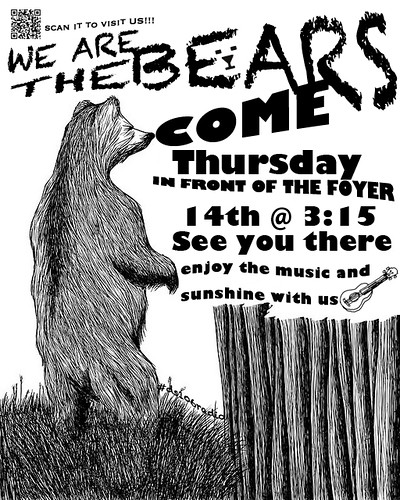
- Guitar class as Rock band
- Open Online Philosophy Startup & Invite
- First few weeks
- Learning Analytics in #Philosophy12
- Remixing #Philosophy12 Discussions
- The Philosophy Pop Quiz
- Choose Your Own Adventure Youtube series


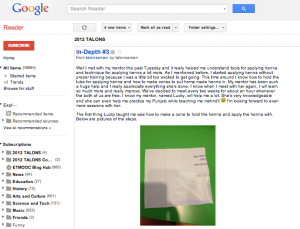
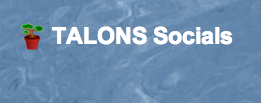
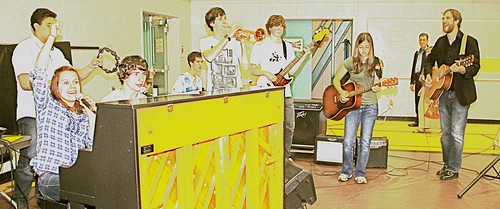
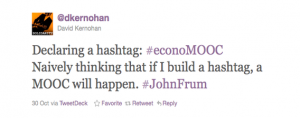

Wow, Bryan, thanks for the epic share here, and the ties into Gardner Campbell’s poetic/prophetic talk (extra music points for the Dylan reference). I’m taking note of more open work you’ve done that I have missed before! Your approach is so genuine and I am sure you are instilling these ideas into your students; their own actions have clearly demonstrated it.
Thank YOU, man! I might have had that Dylan quote n nearly tatoo’d on me by the end of college, but Gardner and many of the ideas that provide the foundation of many of these open approaches come from the genius of yourself, and Jim and a host of others who have shifted my focus toward creating the space for students (and other learners) to create, and collaborate. I think a lot of people think this way in their physical classrooms, but online learning (or blended environments like those above) presents different challenges and possibilities that I’m always excited to explore.
Thanks for the comment, enjoy Japan, Alan!